Earth Day was last this week and the exhortations to be less wasteful hit their yearly apex. Though sewing a loose button back onto a shirt is a no-brainer, what about mending a tent so that it will stay watertight during a thunderstorm? That can feel like an overwhelming task!
Too often I hear from people that they retired a piece of gear into the trash can because they didn’t think that a component was replaceable. Where do you find a replacement pole for a tent that stopped being made a decade ago or a buckle that will fit the hip belt of your backpack? What about scraps of outdoor gear fabric to use as a patch? Unless you make your own gear1, you likely don’t have a selection of ripstop nylon in your fabric stash!
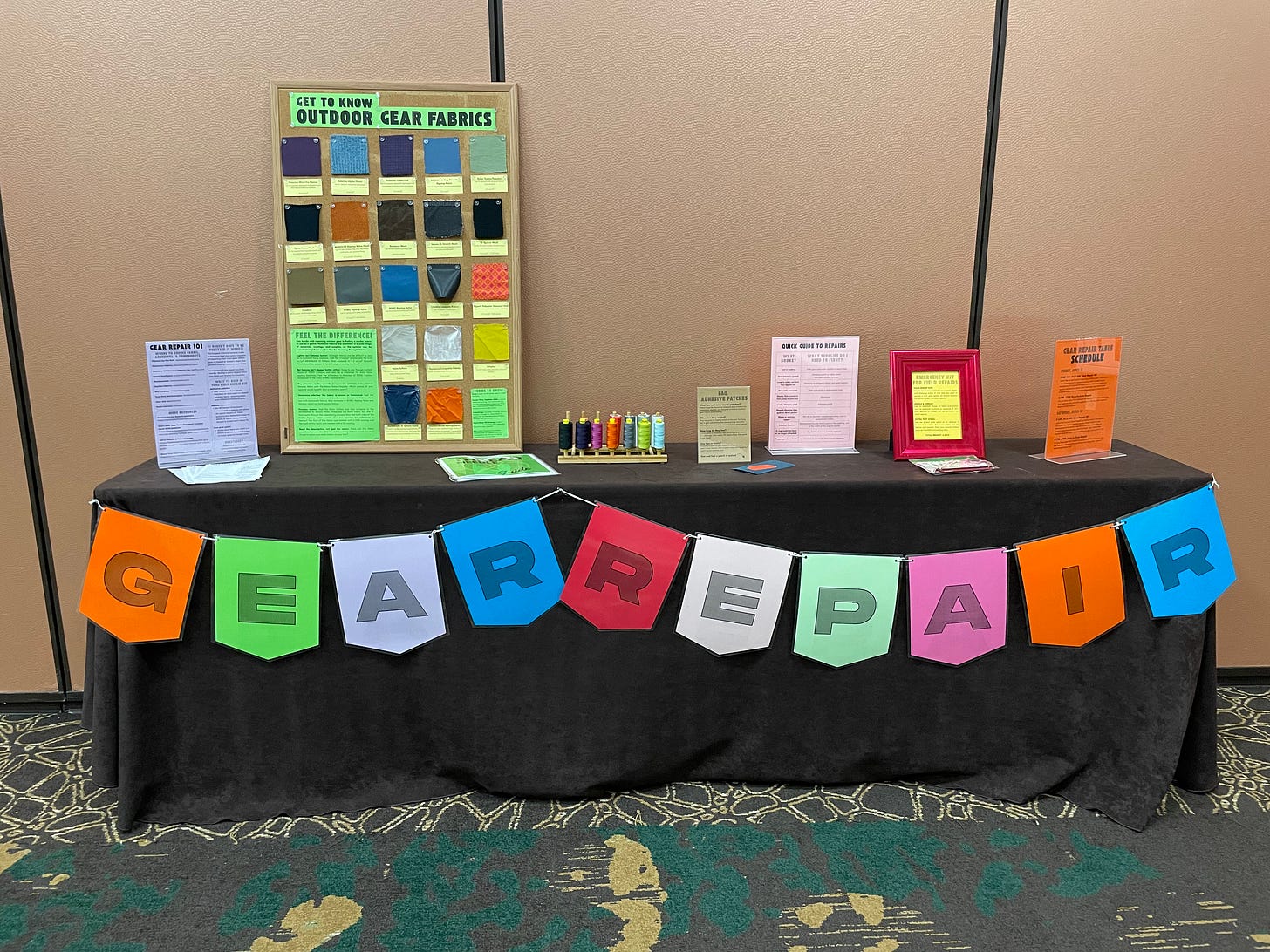
Answering these questions was the goal of an hour-long presentation I gave earlier this month at the Ice Age Trail Alliance’s Annual Conference. My motto when it comes to repairs is, “If it works, it doesn’t have to be pretty!” Once you come to terms with the fact that your gear will have visible mending, repairs become much easier. To get you started on your own gear repair adventure, I have compiled four of the audience’s favorite tips from my presentation:
Using gear repair tape or patches is not cheating, it is a totally viable solution for both emergency and long term repairs. Just because you know how to sew doesn’t mean that you always have the time or inclination to source an appropriate fabric, sew on the patch securely (and so it won’t fray), and then waterproof the patched area. Sometimes you just want an immediate fix, not a long term project. If the ripped gear has baffles—like a sleeping bag or down puffy jacket—that’s an even better reason to use an adhesive patch because sewing through baffles can create cold spots in the gear that is supposed to keep you warm. Adhesive patches—Tenacious Tape and NoSo Patches are two popular brands—come in a wide variety of colors so you can make the repair less obvious and they can last for years of use. I stuck a small piece of Tenacious Tape on a rip in my tent’s vestibule2 in October 2022 and it is still hanging on!
Rivets may be fixable without specialized tools. Last summer, two of the d-rings used for shoelaces detached from the leather boots that I wear for trailwork. The d-rings were still floating along the laces, but the rivets that had held them in place were long lost in the dirt. I was incredibly frustrated because I didn’t want to replace my boots, but the missing d-rings made it impossible to securely tie my boot and I could feel my foot slipping around when I was working on inclines.
I took my boots to the local Ace Hardware where my dad and I (with the help of a rather confused hardware employee) searched for tiny flathead screws. We found a size that fit the hole left by the lost rivet and picked up four3, along with matching washers and nuts. Back at home, I cut into the interior lining of the boot with an X-Acto knife until I could feel the hole in the leather where there had once been a rivet. I then inserted the screw through the hole—flat head end closest to my foot—and reattached the d-ring, no special rivet tool needed!
Carrying an emergency repair kit won’t wreck your base weight. I used to just carry duct tape as my emergency repair kit while backpacking, but over time I have refined it to a much more versatile set up that only weighs 0.6 ounces. It includes an 8 inch length of Tenacious Tape, a needle with a 20 inch length of thread4, and a spare tent stake. (If I’m camping near my car, I usually just throw the whole roll of Tenacious Tape in with my gear.)
The gear tape is great for fixing rips in tents, clothing, sleeping bags, and sleeping pads. It can also be used with the extra tent stake to create a splint for a broken tent pole.5 The needle and thread are handy for reattaching the loops used to stake out your tent or for sewing back on a button. With these three items, you can cobble together a fix for most gear failures that will happen on a trip.
It’s a lot easier to find replacement components than you think! Companies that specialize in outdoor fabrics6 typically have a selection of notions, such as buckles, cordlocks, and zippers. They also often offer fabric samples, which are a great way to source small quantities of fabric to use as patches without breaking the bank. And for all the people who have bemoaned the fact that the manufacturer no longer sells replacement poles for their favorite tent, check out TentPole Technologies before making a trip to the dump.
What pieces of gear do you have at home that could use some TLC before it’s fit to be back on the trail or at a campsite?
Though I highly suggest making your own gear:
A different rip than the one pictured in the accompanying photo!
I had two missing rivets and figured that others would break in the future, so it made sense to have some backups on hand.
My preferred thread for making and repairing gear is Gutermann Mara 70, but whatever all-purpose 100% polyester thread you have will be fine for field repairs.
Place the tent stake over the break in the tent pole. Wrap either end of the tent stake with gear tape to hold it in place.
The wiki from the MYOG subreddit has a wealth of knowledge about where to source outdoor fabrics and components. My go-to supplier is Ripstop by the Roll, but I have ordered from other companies as well when I had a very specific item in mind.


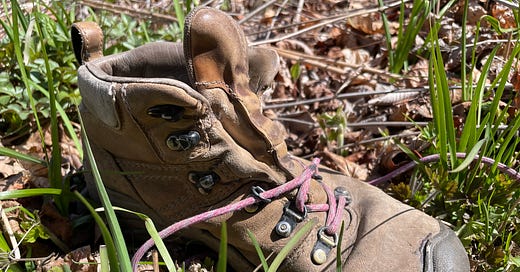


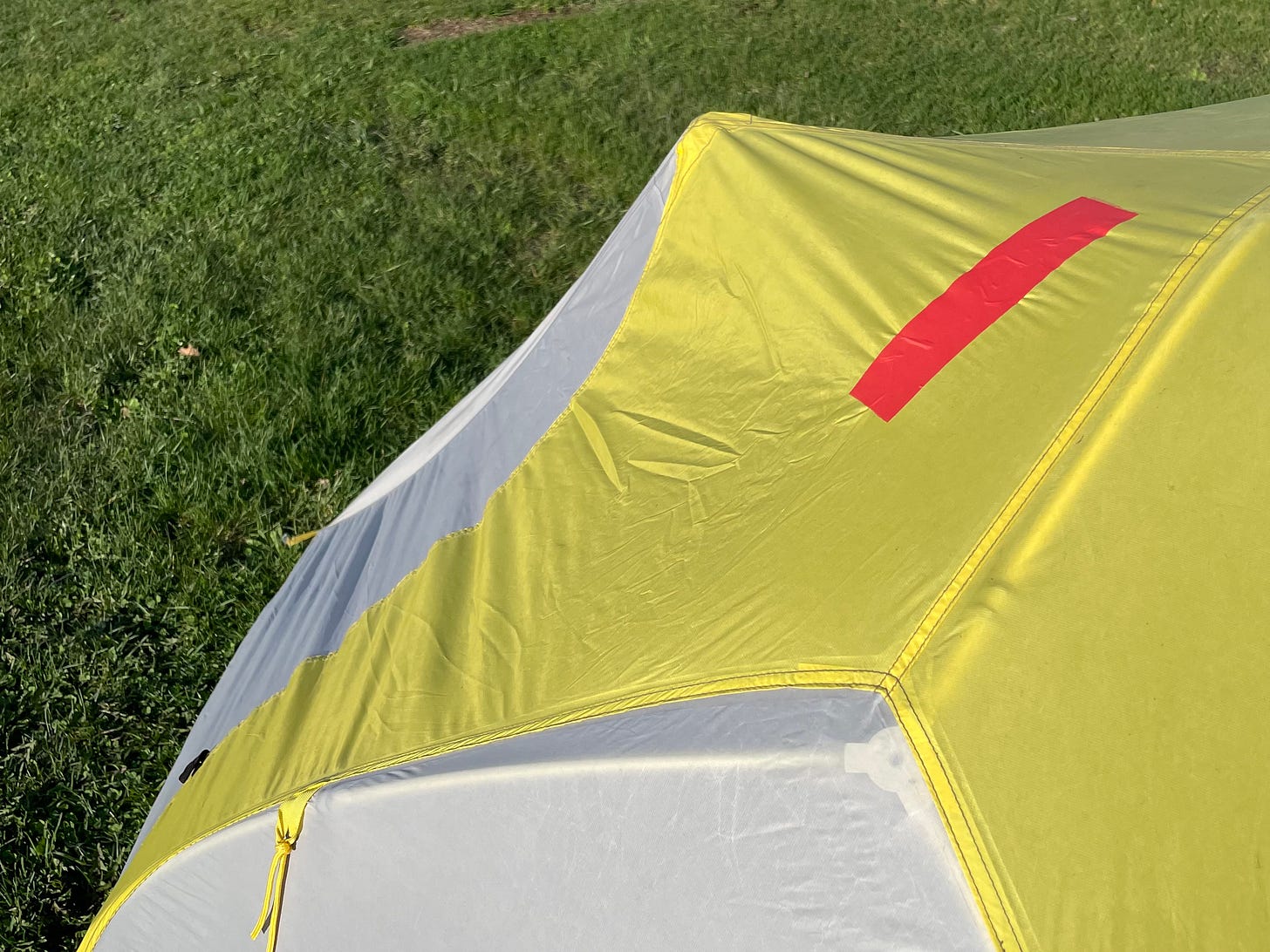

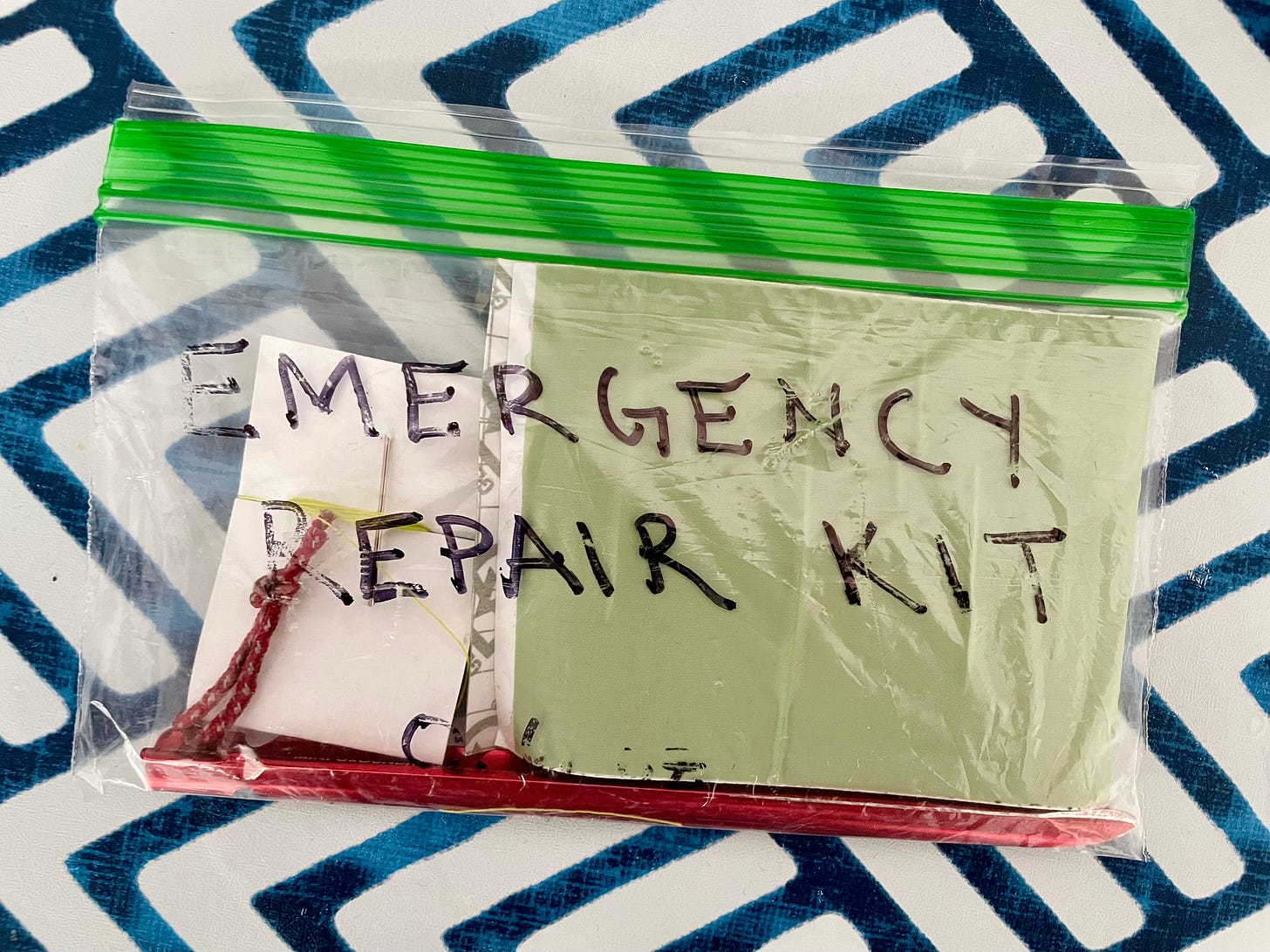
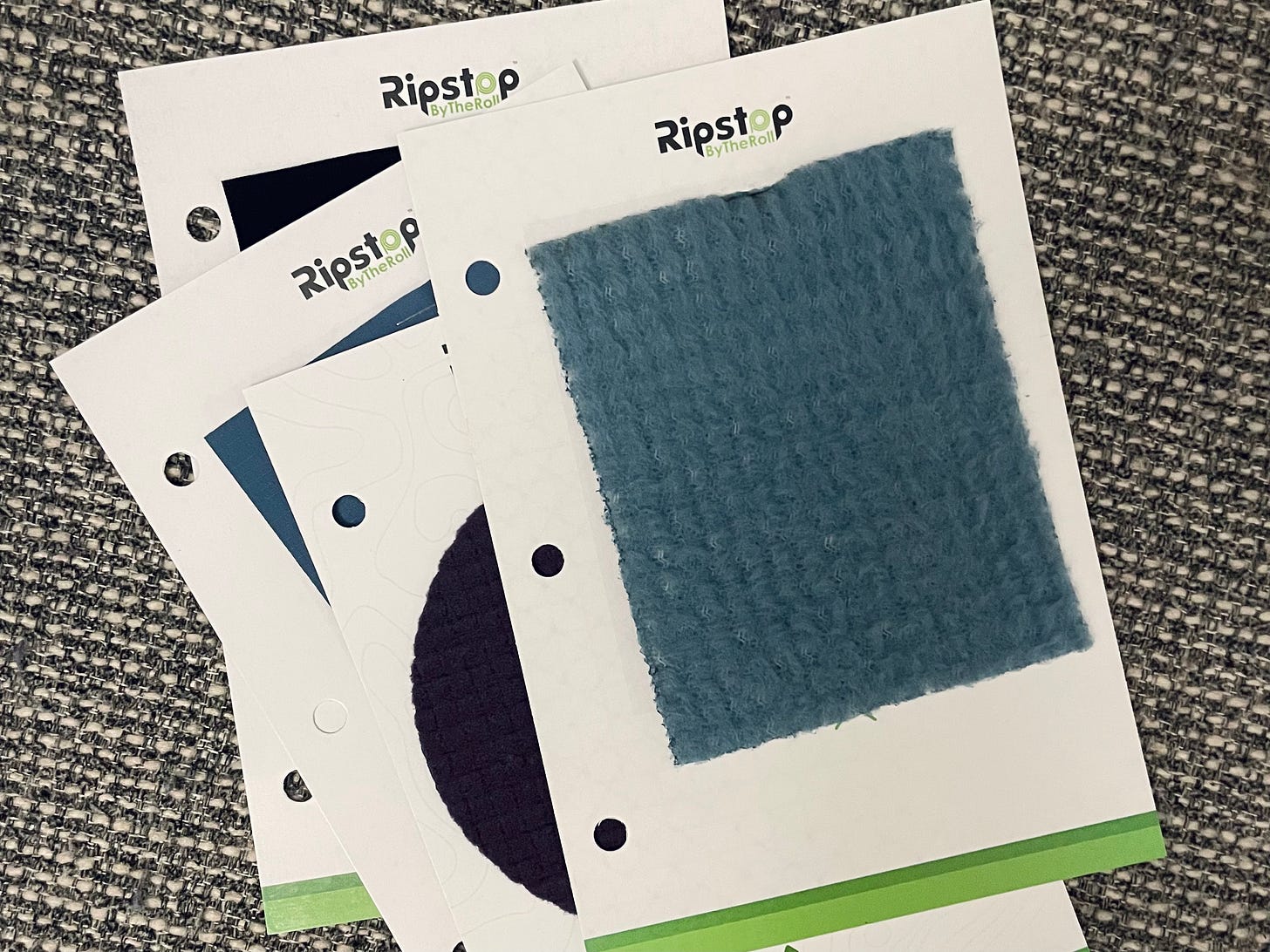

You’re amazing! I feel as if your concepts could apply to more than outdoors gear. Pass the tape.
This is super cool, I am amazed that you even presented the topic at a conference! I like to spend an evening mending my clothes, but I had no idea how to fix other outdoor gear. Totally agree that it doesn't need to be pretty - arguably, outdoor gear is more impressive if it looks like it has been in use! I didn't even know that gear tape exists - just found out that it's available in Europe too... Thanks :)